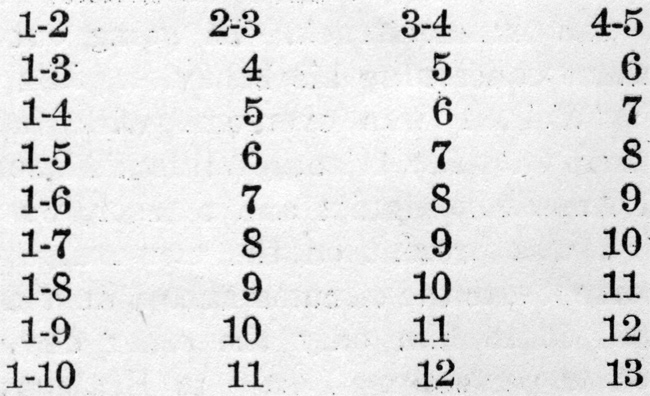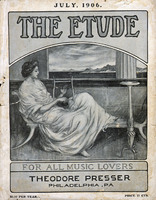Many teachers complain of having difficulty in teaching their pupils to memorize. They will therefore welcome the following contribution to the Round Table:
How to Memorize Music.
The importance of memorizing one’s pieces has now become universally recognized. In addition to commanding better attention from his listeners, the one who plays from memory can more fully surrender himself to the interpretation of the composition. A tone-poem should be recited, not read. The mental discipline from this kind of work is very great, and at the same time it makes one more truly musical.
Quite a number of otherwise talented pupils have difficulty in committing their pieces. I have been able to secure satisfactory results by the “numerical method of memorizing,” with even the dullest pupil. It works especially well with pieces which happen to be difficult to commit. Try this system with the next pupil who declares it impossible to memorize music.
Beginning at the close of the composition, separate it into sections of a few measures or phrases each. The dividing point for these may be arbitrarily selected, the idea being only to afford convenient starting and stopping places. Short melodic figures, phrases and groups of notes make good divisions. Number each of these, proceeding backwards from the last to the first, using the figure 1 for the last phrase. Now prepare a schedule of numbers similar to the subjoined one, which is based upon a composition that has been marked for fifteen numbers.

Continue this in the same manner until the figures are exhausted. When 15 is reached at the bottom of the sixth column, the remaining columns Will continue to grow less until the last one comes out simply, 14-15. We are now ready to begin actual work. Play numbers 1 and 2 in succession, and repeat several times; then skipping 2, play 1 and 3 several times; then 1 and 4, 1 and 5, and so on to the end, in each case omitting the intervening numbers. This means playing in connection entirely dissimilar portions of the piece. The contrast afforded by this association of ideas will tend to stamp them almost indelibly upon the pupil’s mind. During the entire practice a mental picture of the notes should be kept in mind, providing the teacher favors the use of the visual memory. After a glance at a phrase, th eyes may be directed elsewhere, but not the thoughts. Concentration is necessary in all piano work, and particularly in rapid memorizing. Advanced students, who have acquired the art of tone thought, may profitably think a passage through before playing it. A little time, at least, could be spared for this musicianly proceeding.
It will not be necessary to go through the list twice, hence place a dash under the number where you discontinue your day’s work.
The desire to accomplish “a few more numbers” will act as an incentive to harder study. When the schedule of numbers has been completed, straighten the piece by playing from the first page to the last. This gives rise to the succession 15; 14; 13; 12; etc., to 1, and presents the sections in their proper order.— Mordaunt A. Goodnough.



